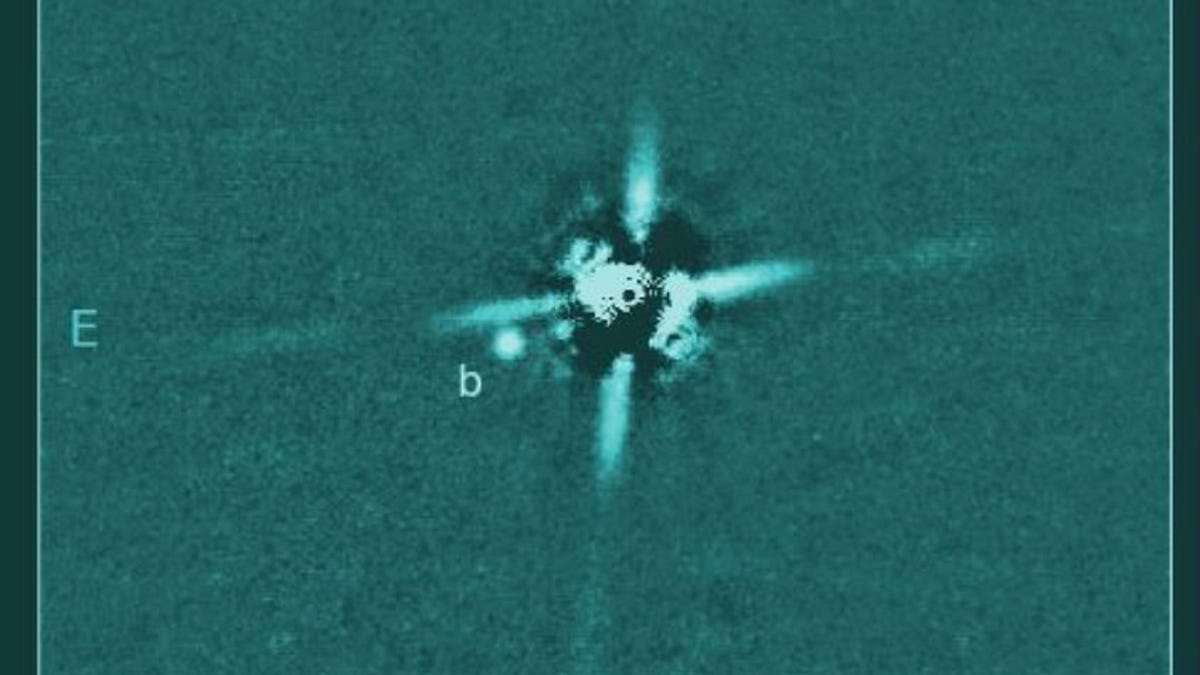Astronomers snap stunning baby picture of an infant planet
What a cutie.
You won't spot dimples in baby pictures of exoplanets. You'll be lucky to see anything at all, which is why a newly released image of an infant planet outside our solar system is so rare and remarkable. It might not look like much, but it's a big deal when it comes to understanding how planets form.
The direct image of the planet comes from the keen eye of the Subaru Telescope in Hawaii. The processed image has had the light from the host star mostly removed. The four jet-like lines emanating from the planet are just artifacts from the telescope's optics.
The exoplanet is named 2M0437b, a moniker Elon Musk might want to borrow for his next kid. A study on the planet has been accepted by the journal the Monthly Notices of the Royal Astronomical Society and is available as a preprint.
"This serendipitous discovery adds to an elite list of planets that we can directly observe with our telescopes," said the study's lead author Eric Gaidos of the University of Hawaii at Manoa in a Keck Observatory statement last week. "By analyzing the light from this planet we can say something about its composition, and perhaps where and how it formed in a long-vanished disk of gas and dust around its host star."
The bambino of a planet is likely just a few million years old and it's a bit of a big baby since it's a few times more massive than Jupiter.
The planet has been studied since being spotted in 2018 by the Subaru Telescope. The Keck Observatory, also in Hawaii, was able to confirm 2M0437b as a planet within the Taurus Molecular Cloud, a place of active star birth. The cloud is located about 450 light-years away from us in the constellation Taurus.
It's a challenge to get direct images of exoplanets. NASA describes it as "like trying to see a firefly flitting around a spotlight." In 2018, astronomers with the European Southern Observatory unveiled a view of baby planet PDS 70b, which looked like a blob-like spot near its host star. For 2M0437b, it helped that the young planet orbits far from its star, which made it easier to image.
You wouldn't want to visit 2M0437b. "The planet is so young that it is still hot from the energy released during its formation, with a temperature similar to the lava erupting from Kilauea Volcano," Keck Observatory said. You might say the baby planet is having a temperature tantrum.


